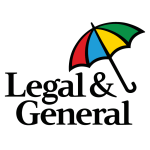FAQ
1. How does a tax-free lump sum work in an SSAS pension?
When you reach the age of 55, you have the option to start drawing benefits from your SSAS pension. One of the primary benefits you can take advantage of is a tax-free lump sum. This is typically up to 25% of your pension pot and it’s entirely free from tax.
The remainder of your pension pot can be used to provide a regular income in retirement. However, this income is subject to income tax, with the rate of tax you pay depending on your overall income in each tax year.
2. Is an SSAS a registered pension scheme?
Yes, a Small Self Administered Scheme (SSAS) is a type of registered pension scheme, meaning it is registered with HM Revenue and Customs (HMRC).
Therefore, it is subject to the standardised rules and regulations that other registered pension schemes face. This includes the same tax benefits, such as tax relief on contributions and tax-free growth of investments within the scheme.
Being a registered pension scheme also means that the SSAS is regulated by The Pensions Regulator. They ensure that the scheme is run correctly and that the necessary reporting is done.
Therefore, the scheme can lose its registered status and face charges if it does not comply with the regulations.
3. Can an SSAS pension offer commercial loans?
Yes, one of the appealing advantages of an SSAS pension is the option to offer commercial loans. The SSAS can lend money to the sponsoring employer, providing a beneficial way to support the business while growing the pension fund.
The loan must also be repaid with interest, offering a steady return for the pension scheme.
However, it should be noted that there are strict rules surrounding these loans, ensuring that the pension fund is not put at risk.
For example, the loan must be secured, typically on an asset of the business, and the interest rate must be at least 1% above the average base lending rate of high street banks.
There are also limits on the amount of money that can be lent, which is generally up to 50% of the net value of the scheme’s assets.
4. How does offering commercial loans benefit the SSAS pension?
When an SSAS pension lends money to the sponsoring employer, it is very often a win-win situation. This is because the business gets to receive the capital that it needs to grow, potentially increasing the profitability of the company.
Alternatively, the SSAS benefits from the loan repayments with interest, which are paid into the pension fund.
The interest rate on the loan is typically higher than what could be achieved through traditional cash deposits, meaning that this is often an effective way to boost the growth of the pension fund.
However, it’s important to remember that this type of investment comes with risks. If the business fails to repay the loan, it could impact the value of the pension fund.
5. What happens if the company fails to repay the commercial loan?
If the sponsoring employer fails to repay the loan, there can be serious implications for the SSAS pension. This is because the pension fund could lose a significant amount of money, potentially impacting the retirement benefits for the scheme members.
However, all loans made by the SSAS must be secured on an asset of the business. This means that if the business fails to repay the loan, the asset could be sold to recover the money owed to the SSAS pension.
Unfortunately, the sale of the asset may not cover the full amount of the loan,particularly if the value of the asset has fallen since the loan was made. However, it can provide a contribution.






















